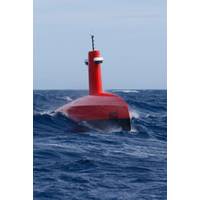
Exail sells first DriX O-16 Transoceanic USV
step forward in Uncrewed Surface Vessel technology. It marks an exciting new chapter in the evolution of USVs and their vital role in shaping the future of modern hydrographic, survey and inspection operations.”As the maritime industry is undergoing a strategic shift toward adopting autonomous technologies and low-carbon impact solutions, the DriX O-16 supports this transition, offering operators a sustainable alternative to traditional crewed vessels. Its hybrid propulsion and naval architecture minimize fuel consumption, while its optimized and innovative system architecture significantly
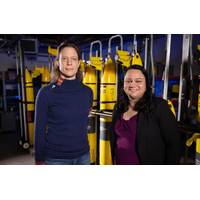
NOC Appoints Huvenne, Carvalho Chief Scientists
MARS team,” says Dr Alexander Phillips, head of MARS. “Their experience and dedication to marine science will play a pivotal role in bridging the gap between MARS innovations and the broader research community, driving forward our mission to enable cutting-edge marine research with autonomous technologies."Dr Huvenne is a marine geoscientist with more than 20 years of experience in the study of complex deep-sea environments such as cold-water coral reefs, submarine canyons, hydrothermal vents or seamounts. She is currently Associate Head of Ocean BioGeosciences at NOC.Dr Carvalho is
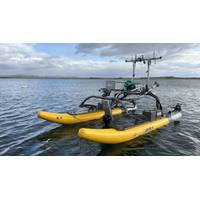
OPT and Unique Group Team Up for USV Services in Middle East
, the companies expect the accelerated adoption of USVs in the region."Working with Unique Group will further accelerate our efforts to deploy USVs globally. We are very excited about the prospects of expanding into the UAE and applaud the local industry’s forward thinking in adopting autonomous technologies,” said Philipp Stratmann, OPT’s CEO.“By leveraging our extensive regional experience and advanced engineering capabilities, we are committed to helping OPT develop a GCC-specific WAM-V 22. This next generation vessel will be designed to meet the regions stringent safety
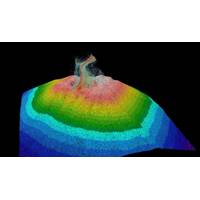
SOI Steps Ahead on Ocean Mapping
we want to build out, of course, our biological capabilities on board. But this is a new ship for us. This is the first year of our shakedown cruises. We're still testing everything and learning the vessel itself. But in the next few years, I think we will start to add some of the remote and autonomous technologies that we just discussed.So for example, a Saildrone or a SEA-KIT, something like that, an autonomous surface vessel, potentially an AUV. With that when th scientists get out there, they know what they're looking for and where they're looking, whether it's a sea mount which has

ABS Grants AIP for Saildrone Uncrewed Surface Vehicles
and applicable regulations as an important first step to full classification.Patrick Ryan, ABS Senior Vice President and Chief Technology Officer, said, “ABS is leading the industry in supporting autonomous projects and assisting innovative companies like Saildrone. ABS understands that autonomous technologies are not stand-alone products but fully integrated with vehicle infrastructure and the result of numerous advancements in a wide variety of mechanisms including sensors, imaging, connectivity, machine learning and more.”Saildrone has already begun to scale production of its Voyager
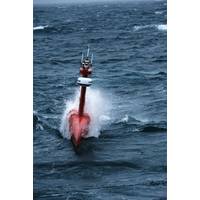
Exail's DriX USV Gets Lloyd's Register Certification
, stability, as well as command and control in the context of remotely supervised autonomy.This new certification by Lloyd’s Register is another milestone for the DriX USV and its operators and marks a major step forward in the transition of the maritime industry towards the adoption of new autonomous technologies.Exail: A New (Old) Name in SubseaPaul James, Naval Centre of Expertise Manager at Lloyd’s Register said:"We are pleased to have been able to work with Exail to provide independent assurance for the DriX system. It’s great to be able to work with a company that is innovative
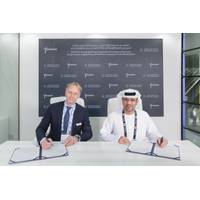
ADIPEC: Fugro, AD Ports Pen Deal for Remote & Autonomous Tech Use in Middle East
During the ADIPEC exhibition in Abu Dhabi, Dutch firm Fugro and UAE's AD Ports Group signed an agreement that sets out combined goals to utilize remote and autonomous technologies in the region. The agreement was signed by Captain Mohamed Juma Al Shamisi, Managing Director and Group CEO, AD Ports Group and Mark Heine – Fugro CEO.The companies said that the would create a platform to implement remote and autonomous technology, and to create guidelines that will ensure the UAE is prepared to welcome, and benefit from, the use of latest industry advancements.The companies have been working

HAUV Featuring Adaptive Autonomy Deployed at Nordsee One
was provided to the client in near real-time via an integrated cloud-based platform, reducing the typical weeks long wait for traditional reports to mere seconds.Jan Schmökel, Balance of Plant Engineer at Nordsee One GmbH, said, “While we hear a lot about remotely-operated and autonomous technologies for marine data acquisition and underwater inspection, this is the first time we have witnessed a platform actually think and react accordingly to ensure an optimal approach based on the prevailing conditions. The speed and quality of the data reporting are unprecedented, and we are delighted

DriX USV Delivered to UNH CCOM
personnel training during the summer of 2021 as well as integration and a first shakedown cruise onboard Ocean Exploration Trust’s E/V Nautilus in March 2022.“We are delighted to embark on this exciting endeavor, working collaboratively with our partners to develop and enhance autonomous technologies that will expand the limits of our capabilities and bring new efficiencies to our efforts to explore and characterize the vast unknown areas of our oceans,” said UNH CCOM Director Larry Mayer.“NOAA Ocean Exploration is pleased to see the operations of this new DriX technology


 February 2025
February 2025





